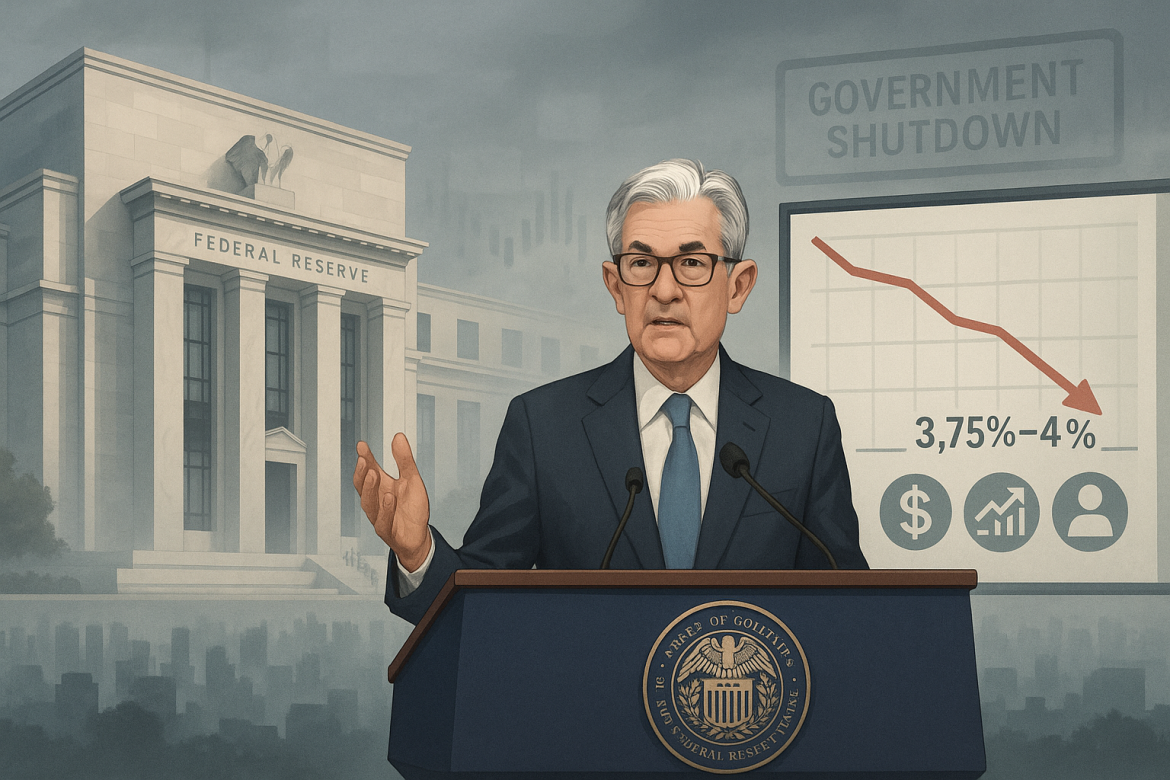The Federal Reserve on Wednesday approved its second consecutive interest rate cut, a widely anticipated move that came despite limited visibility into the economy due to the ongoing government shutdown.
By a 10-2 vote, the Federal Open Market Committee (FOMC) reduced the benchmark federal funds rate by 25 basis points to a range of 3.75%–4%, while also announcing plans to end its quantitative tightening (QT) program on December 1.
The decision marks a cautious effort by the Fed to balance concerns about slowing employment with persistent inflation pressures.
Mixed signals and dissenting votes
Two FOMC members dissented from the decision, reflecting divisions within the committee.
Governor Stephen Miran favored a larger half-point cut, while Kansas City Fed President Jeffrey Schmid voted against any reduction, citing ongoing strength in the economy and elevated inflation.
The Fed’s post-meeting statement acknowledged “uncertainty” stemming from the lack of recent economic data, as the government shutdown has suspended several key reports, including nonfarm payrolls and retail sales.
The only recent major release, the consumer price index (CPI), showed annual inflation running at 3%, driven by higher energy costs and goods affected by President Donald Trump’s tariffs.
“Available indicators suggest that economic activity has been expanding at a moderate pace,” the statement read.
It added that job gains have slowed and the unemployment rate has edged up but remained low through August, while inflation “remains somewhat elevated.”
The committee also reiterated that “downside risks to employment rose in recent months.”
Despite the uncertainty, markets reacted positively to the rate cut.
Stocks fell after the announcement, while Treasury yields climbed.
End of quantitative tightening
In a significant policy shift, the Fed said it would end its balance sheet reduction — also known as quantitative tightening — on December 1.
The QT program, which began in 2022, has reduced the Fed’s balance sheet by about $2.3 trillion, bringing it down from nearly $9 trillion at its peak during the pandemic to around $6.6 trillion.
Under QT, the Fed had been allowing maturing Treasury and mortgage-backed securities to roll off its balance sheet each month rather than reinvesting the proceeds.
However, signs of tightening in short-term funding markets prompted concerns that the reduction may have gone far enough.
An implementation note said the Fed would now roll proceeds from maturing mortgage securities into shorter-term Treasury bills, marking a more flexible stance toward liquidity management.
Analysts, including Evercore ISI’s Krishna Guha, said the decision opens the door for the Fed to potentially restart asset purchases in 2026 to accommodate “organic growth” in market demand.
Balancing risks in a volatile environment
Fed Chair Jerome Powell, speaking at a press conference after the decision, emphasized that the overall economic outlook had not changed significantly since September, despite limited data availability.
“Although some important federal government data have been delayed due to the shutdown, the public and private sector data that have remained available suggest that the outlook for employment and inflation has not changed much,” Powell said.
Powell also cautioned that another rate cut in December is “not a foregone conclusion.”
While projections released in September had indicated potential reductions in both October and December, Powell emphasized that the December move is not assured, signaling a more data-dependent approach by the central bank.
The Fed’s balancing act remains delicate.
While the economy continues to expand moderately, inflation remains above the central bank’s 2% target, and the labor market has shown signs of softening.
With only one meeting left this year, policymakers have left the door open for further adjustments in December.
The post Fed delivers quarter points rate cut amid data uncertainty appeared first on Invezz

